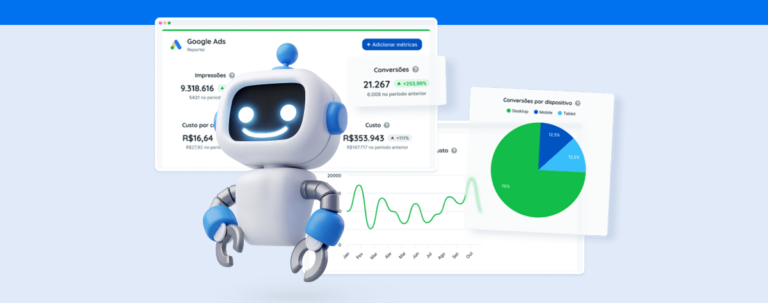Social Network Metrics
A successful media management strategy needs to be well planned, well-executed, and also analyzed so that you can understand if your actions are working (or not) and think about improvements. Social network metrics are great allies for those who want to deliver excellent results to their customers.
After all, what are metrics in social networks?
Social network metrics measure the outcome of your online actions through data. It helps you to understand user behavior, market trends, and other variables.
Now that you understand what metrics are, let’s take a look at the important ones:
1. Engagement Rate
This data reveals how many people were involved with your post through likes, comments, and post sharing. If your goal is to make your company the love mark of your customers, you need to keep track of the engagement rate and think of actions that bring the audience you want to reach even closer.
To calculate the engagement rate, you need to see the number of interactions (likes, comments, shares) and divide by the number of impressions (reach).
Example: A Facebook post reached 4,500 people and got 665 likes, 254 comments, and 54 shares. Did this post get a reasonable engagement rate?
Let’s go to the calculations:
(665+254+54)/4500 = 0,2162 or (21,62% engagement rate)
Each page has its audience and style of content, so it is best to compare the engagement rate of your publications with those of previous books and even publications of similar businesses you manage, if possible. No comparing the results of your micro-enterprise posts with those of a multinational, for example.
2. Organic Reach
Decreasing organic reach is a big challenge for social media analysts. However, this is still a critical metric, especially for those who don’t have many resources to drive publications.
Organic reach counts how many people were naturally hit by your posts without paying you a dime. This metric is directly related to social media algorithms, which are the criteria that will determine whether particular content is relevant and will be “delivered” to a specific user.
Each social network has its algorithms and promotion criteria, so you need to take that into account when producing and delivering content, primarily as social networks often don’t read their posts organically to their entire base.
The tip here is to create new and shareable posts, increasing the reach of your posts.
3. Bounce Rate
Bounce Rate can be the percentage of users who have logged in to a page (in the case of a website), but it can also apply to the number of people blocking your content in the feed, unliking the page, or reporting as SPAM (in the case of a Facebook fan page).
This metric is important because it shows how many people are rejecting and are bothered by your social media posts or your website’s landing page. If this is happening too often, it is a sign that your content delivery should be rethought to provide a better user experience.
4. Click-through rate
Click-Through Rate (CTR) is also a useful metric for observing how well your posts are performing, evaluating if who views your content clicks, and interact with it.
To find out your clickthrough rate, look at the number of clicks your post received, and divide it by the number of impressions.
Example: One company sent a marketing email to 500 people, 250 people opened the email, and 24 clicked on the link that was in the body of the email text. Is the clickthrough rate for this campaign high?
Let’s go to the calculations:
24/250=0,096 or (9,6%)
A high CTR indicates that users liked your content and found it useful, while a low CTR means that you need to improve the performance of the account you manage by devising new action plans.
Where to measure all of this?
You can access the results of these and other metrics in the social network information and analytics dashboard you use. However, if you have many clients and manage many profiles and accounts, analyzing each parameter, each customer, and in each social media will be an arduous task.
Keep in mind that there is no successful social media strategy without the right metrics analysis, and data drove work that takes into account the particularities of each media.
That’s why we suggest using Reportei, which generates professional reports in 3 seconds with Facebook, Instagram, LinkedIn, YouTube, Google Analytics, and several more. Get to know Reportei, testing it for free for three days.




